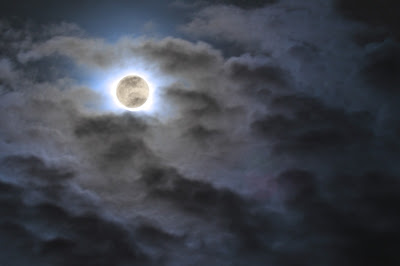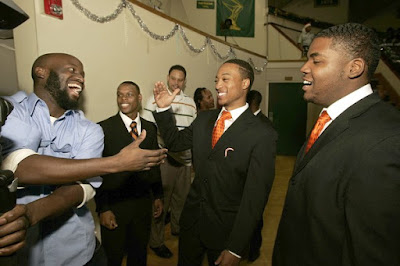
Full Moon Names for 2010
By Joe Rao
SPACE.com Skywatching Columnist
posted: 27 January 2010
07:20 am ET
http://www.space.com/spacewatch/full-moon-names-2010-100127.html
Full Moon names date back to Native Americans, of what is now the northern and eastern United States. Those tribes of a few hundred years ago kept track of the seasons by giving distinctive names to each recurring full moon. Their names were applied to the entire month in which each occurred.
There were some variations in the moon names, but in general the same ones were current throughout the Algonquin tribes from New England on west to Lake Superior. European settlers followed their own customs and created some of their own names. Since the lunar ("synodic") month is roughly 29.5 days in length on average, the dates of the full moon shift from year to year.
Here is a listing of all of the full moon names, as well as the dates and times for 2010. Unless otherwise noted, all times are for the Eastern Time Zone.
January 30, 1:18 a.m. EST -- Full Wolf Moon. Amid the zero cold and deep snows of midwinter, the wolf packs howled hungrily outside Indian villages. It was also known as the Old Moon or the Moon after Yule. In some tribes this was the Full Snow Moon; most applied that name to the next moon. The Moon will also arrive at perigee (it's closest point to Earth on its non-circular orbit) less than three hours later, at 4:04 a.m. EST at a distance of 221,577 mi. (356,593 km.) from Earth. So this is the biggest full moon of 2010. Very high ocean tides can be expected during the next two or three days, thanks to the coincidence of perigee with full moon.
February 28, 11:38 a.m. EST -- Full Snow Moon. Usually the heaviest snows fall in this month. Hunting becomes very difficult, and hence to some tribes this was the Full Hunger Moon.
March 29, 10:25 p.m. EDT -- Full Worm Moon. In this month the ground softens and the earthworm casts reappear, inviting the return of the robins. The more northern tribes knew this as the Full Crow Moon, when the cawing of crows signals the end of winter, or the Full Crust Moon because the snow cover becomes crusted from thawing by day and freezing at night. The Full Sap Moon, marking the time of tapping maple trees, is another variation. In 2010 this is also the Paschal Full Moon; the first full Moon of the spring season. The first Sunday following the Paschal Moon is Easter Sunday, which indeed will be observed six days later on Sunday, April 4.
April 28, 8:18 a.m. EDT -- Full Pink Moon. The grass pink or wild ground phlox is one of the earliest widespread flowers of the spring. Other names were the Full Sprouting Grass Moon, the Egg Moon, and -- among coastal tribes -- the Full Fish Moon, when the shad come upstream to spawn.
May 27, 7:07 p.m. EDT -- Full Flower Moon. Flowers are now abundant everywhere. It was also known as the Full Corn Planting Moon or the Milk Moon.
June 26, 7:30 a.m. EDT -- Full Strawberry Moon. Strawberry picking season peaks during this month. Europeans called this the Rose Moon. There will be also be a Partial Lunar Eclipse that coincides with moonset from the western and central sections of the US and Canada and coincides with moonrise for parts of eastern Asia. At its maximum the Moon will be overhead for observers in the South Pacific;nearly 54-percent of the Moon's diameter will become immersed in the Earth's dark umbral shadow.
July 25, 9:37 p.m. EDT -- Full Buck Moon, when the new antlers of buck deer push out from their foreheads in coatings of velvety fur. It was also often called the Full Thunder Moon, thunderstorms being now most frequent. Sometimes it's also called the Full Hay Moon.
August 24, 1:05 p.m. EDT -- Full Sturgeon Moon, when this large fish of the Great Lakes and other major bodies of water like Lake Champlain is most readily caught. A few tribes knew it as the Full Red Moon because when the moon rises it looks reddish through sultry haze, or the Green Corn Moon or Grain Moon. Since the Moon arrives at apogee about 12 hours later, this will also be the smallest full moon of 2010. In terms of apparent size, it will appear 12.3-percent smaller than the full Moon of Jan. 30.
September 23, 5:17 a.m. EDT -- Full Harvest Moon. Traditionally, this designation goes to the full moon that occurs closest to the Autumnal (fall) Equinox. The Harvest Moon usually comes in September, but (on average) once or twice a decade it will fall in early October. At the peak of the harvest, farmers can work into the night by the light of this moon. Usually the moon rises an average of 50 minutes later each night, but for the few nights around the Harvest Moon, the moon seems to rise at nearly the same time each night: just 25 to 30 minutes later across the U.S., and only 10 to 20 minutes later for much of Canada and Europe. Corn, pumpkins, squash, beans, and wild rice -- the chief Indian staples -- are now ready for gathering.
October 22, 9:36 p.m. EDT -- Full Hunters' Moon. With the leaves falling and the deer fattened, it's now time to hunt. Since the fields have been reaped, hunters can ride over the stubble, and can more easily see the fox, as well as other animals, which can be caught for a thanksgiving banquet after the harvest.
November 21, 12:27 p.m. EST -- Full Beaver Moon. At this point of the year, it's time to set beaver traps before the swamps freeze to ensure a supply of warm winter furs. Another interpretation suggests that the name Beaver Full Moon come from the fact that the beavers are now active in their preparation for winter. It's also called the Frosty Moon.
December 21, 3:13 a.m. EST -- Full Cold Moon. On occasion, this moon was also called the Moon before Yule. December is also the month the winter cold fastens its grip. Sometimes this moon is referred to as the Full Long Nights Moon and the term "Long Night" Moon is a very appropriate name because the nights are now indeed long and the Moon is above the horizon a long time. This particular full moon makes its highest arc across the sky because it's diametrically opposite to the low Sun. In fact, the moment of the Winter Solstice comes just over 15 hours after this full moon, at 6:38 p.m. EST.
Last, but certainly not least, this will also be the night of a Total Lunar Eclipse. North Americans will have a ringside seat for this event (totality will last 73-minutes) and, depending on your location, will take place either during the middle of the night or during the predawn hours. Observers in Western Europe and western Africa will see the opening stages of the eclipse before the Moon sets; South Americans will see the Moon set either during the total phase or as the Moon emerges from the shadow. At mid-eclipse, the Moon will appear almost directly overhead for observers in southern California and Baja Mexico.






